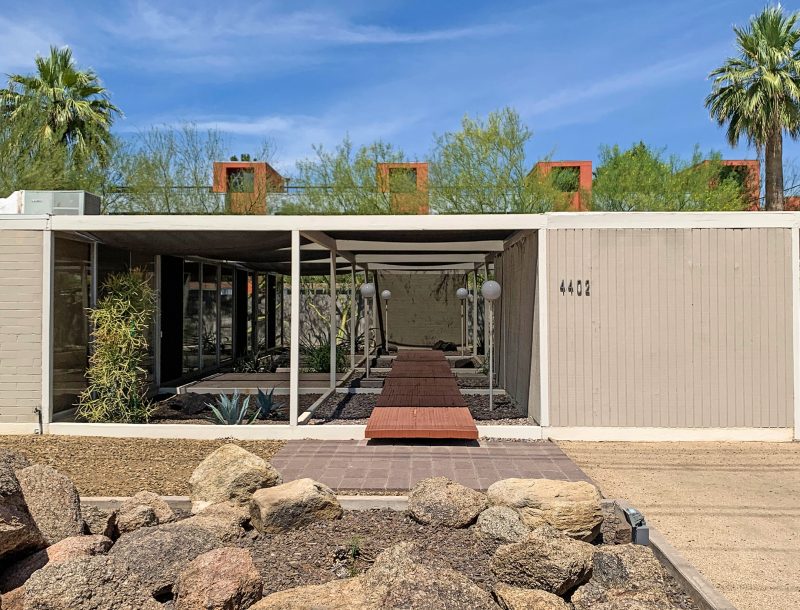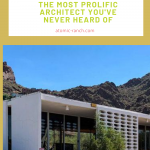Being an honorary California girl who has a passion for modernism it would be a crime to have never heard of Joe Eichler. Well apparently if you live in Phoenix and are a mod snob, it’s a crime to have never heard of Al Beadle — and for good reason!
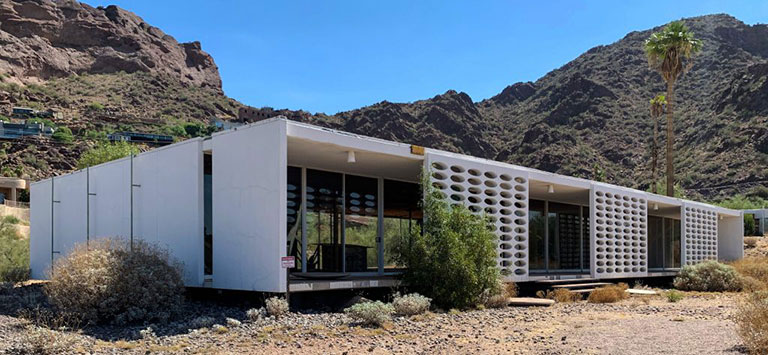
When I decided to write a piece about Beadle, I immediately jumped to the fun part of cruising Phoenix to take in the sights and sounds of all things Beadle. It was only when I sat down to do research that I began to find…well, relatively little.
So I did what any moderately tech-savvy millennial gal would do and went into full internet stalker mode—using quotes in searches, negative search terms and pulling out all the stops to dig up any information on this (now) mysteriously elusive prolific architect.
After reading every possible article I could find on Al Beadle, I was exasperated and had absolutely no new information. On the brink of giving up writing the piece, I stumbled upon the book Constructions: Buildings in Arizona by Alfred Newman Beadle. Published in 1993 and reprinted in 2008, it chronicled Al Beadle’s buildings and designs. This is where I started putting the pieces together and could begin forming a solid spotlight piece.
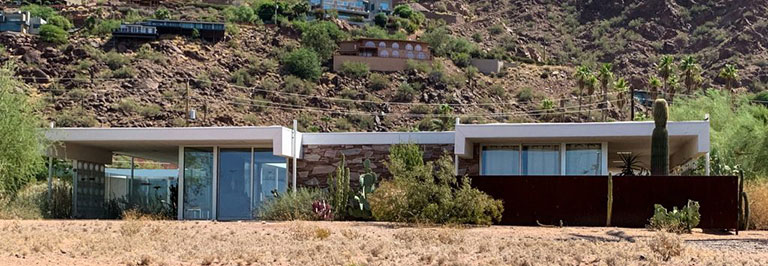
Beadle, much like other recognizable architects of the period, was absolutely prolific in Phoenix. He designed everything from single-family homes, to condominium complexes as well as sky-scraping 22 story commercial buildings and everything in between. Interestingly enough, Beadle and his partner Alan Dailey are the only architects that ever designed a case study house outside of California, the Triad in Phoenix, Arizona.
Case study houses as absolute a coup— in the late 40’s through the mid 60’s Arts and Architecture Magazine commissioned the best of the best architects to design inexpensive model homes. Seriously legit, they had a veritable who’s who of design royalty: Charles and Ray Eames, Eero Saarinen, and Richard Neutra, to name-drop a few. (Clearly not bad company)
Having a background in mid century modern furniture, I’d obviously heard of all the aforementioned architects, but I was a little ashamed that I’d never heard of Alfred Beadle. Al Beadle was a man that was passionate about architecture, creating affordable housing, and never solicited work. In a world of shameless self-promotion, this architect was really tying to fight the good fight and be a part of a movement.
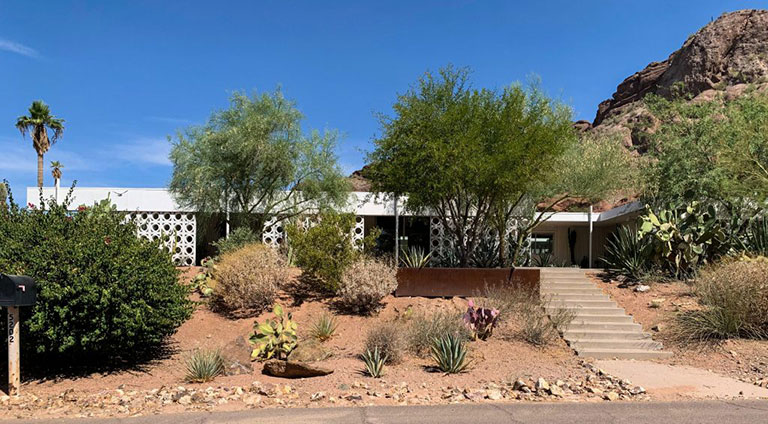
Beadle started young, his father was a contractor in Minnesota who built commercial restaurants and kitchens and would often bring young Beadle along with him to job sites as an apprentice of sorts. From those humble beginnings, it would not be long before Beadle would begin drafting and constructing projects of his own.
Beadle, then a teenager joined the US Naval Seabees, which is a heterograph of the first letters “C & B” for Construction Battalion. Working with the Seabees, Al Beadle gained experience as a naval engineer constructing everything from hospitals, barracks, naval piers and everything in between. Beadle had more hands-on field training than most formally educated architects before he was even eighteen years old.
Upon returning home from service, Beadle began building homes in Minnesota. Al Beadle designs were Bauhaus inspired and he drew much of his inspiration from the great Mies Van Der Rohe. With a passion for creating elegant modern spaces, Beadle sought to use more simple materials and once you’ve seen a Beadle house, you know exactly what to look for: windows. He had an affinity for using floor-to-ceiling windows that stretch as entirely transparent walls, usually on multiple sides of his designs. His works, so simple and elegant can almost disappear into the landscapes on which they were built. Many of his designs also feature flat roofs and I’ve also noticed breeze-blocks and lollipop lamp-posts at multiple properties of his.
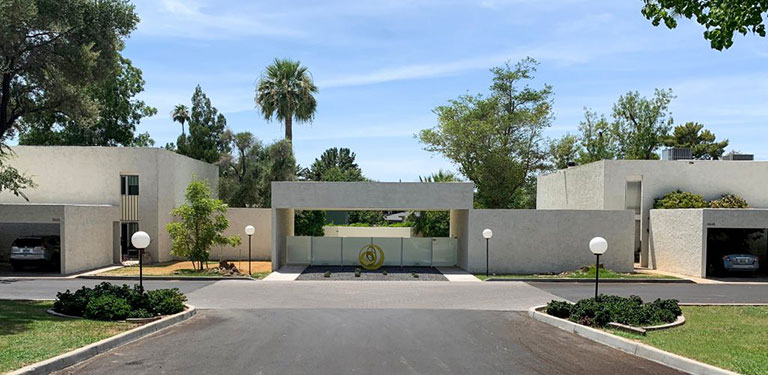
After having some success in Minnesota, Beadle decided to head to Phoenix for its warmer climate and try his hand at building there. The move was a success! So much so, that he caught the eye of people seeking out his business, and those seeking to put him out of business. The American Institute of Architects at the time was very strict about licensing at this time, and Al Beadle was getting too much business and attention. So the local AIA chapter banned the practice of doing design-build without a license, essentially putting Al Beadle out of business in one fell swoop.
At that point, Beadle was young family man, down on his luck with limited prospects. Luckily, he was about to meet someone who would ultimately change the trajectory of his career. Alan Dailey, a respected East Coast architect had heard about what happened to Beadle, straight up cold-called him and offered to work with him as a partner so that Beadle could earn enough apprenticeship hours to be eligible to take the licensing exams. This partnership saved his business and also helped propel his career to stratospheric success.
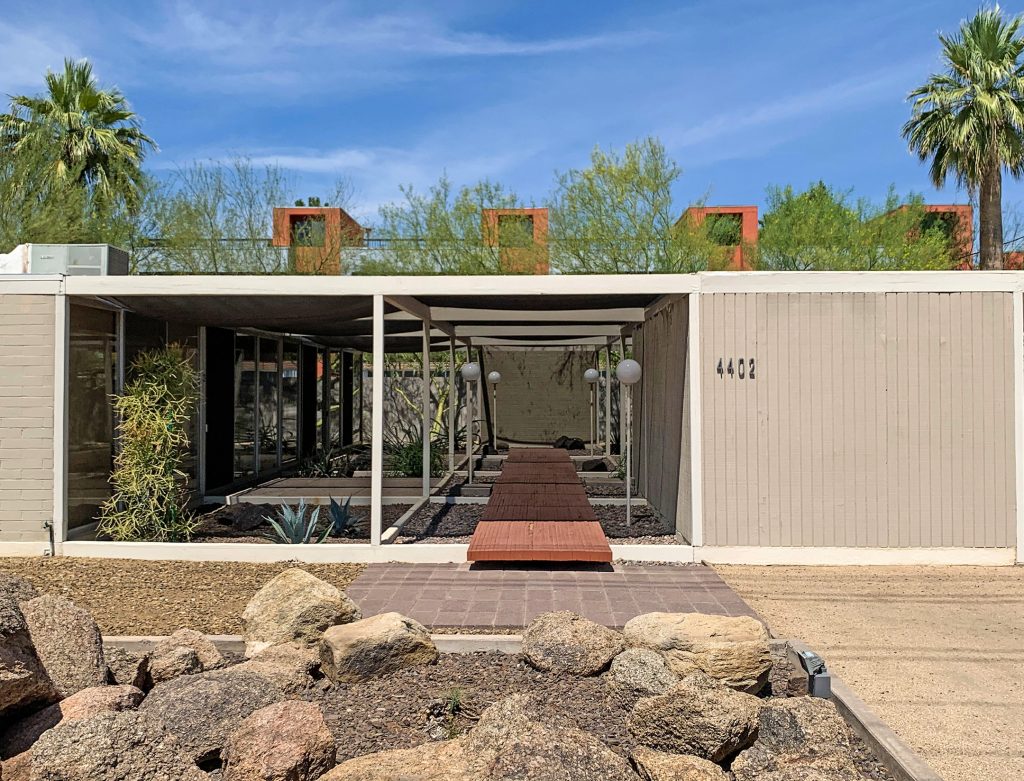
Beadle ended up passing his licensing exams and had a wildly successful career in architecture in Phoenix; designing even after retiring. Reading about this passionate architect, who never wanted to do anything else is both inspiring and heartwarming it reads like a script straight out of Hollywood.
This piece could not have been written without Constructions: Buildings in Arizona by Alfred Newman Beadle , which provided many missing puzzle pieces to the Al Beadle narrative.
Looking for more mod style in the South West? Check out this Mid Century Condo Kitchen Makeover in Phoenix.
And of course, don’t forget to follow us on Instagram, Facebook and Pinterest for more Mid Century Modern inspiration!
About the Contributor
 Malena Brush has owned mid century modern furniture galleries in CA, NV and AZ. She currently owns and operates Habitat Gallery, a luxury mid century modern furniture gallery in Tempe, AZ. After graduating with a BA in communication, she waded into the world of modernism and never looked back. She now spends her days buying, selling, and researching modern design. She can be found on 1stdibs, Chairish and Instagram @habitat_gallery.
Malena Brush has owned mid century modern furniture galleries in CA, NV and AZ. She currently owns and operates Habitat Gallery, a luxury mid century modern furniture gallery in Tempe, AZ. After graduating with a BA in communication, she waded into the world of modernism and never looked back. She now spends her days buying, selling, and researching modern design. She can be found on 1stdibs, Chairish and Instagram @habitat_gallery.

